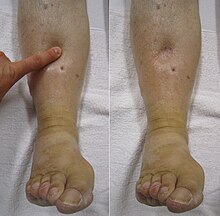


Normally the body's sodium intake must equal sodium loss. Edema occurs when a net positive sodium balance occurs. This causes increased fluid intake and decreased fluid excretion.
CARBONIC ANHYDRASE INHIBITORS–Efficacy as single agents is low; not widely used
–Blocks carbonic anhydrase, the enzyme that catalyzes the reversible reaction involving the hydration of carbon dioxide and the dehydration of carbonic acid
–Results in renal loss of bicarbonate ion, which carries out sodium, water, and potassium
–Long-term use compromised by development of metabolic acidosis
POTASSIUM-SPARING DIURETICS–Less potent than thiazide or loop diuretics
–Block sodium channels in the late distal tubule and collecting ducts either directly (eg, triamterene,amiloride) or by antagonizing aldosterone activity (eg, spironolactone)
–Usually employed to offset the potassium-wasting effects of other diuretics
–May cause hyperkalemia if given with potassium supplements or high potassium diet
–Spironolactone considered diuretic of choice in hepatic cirrhosis
LOOP DIURETICS
–Most potent diuretics (eg, furosemide, bumetanide, torsemide)
–Inhibit the transport of sodium, potassium, and chloride from the ascending limb of the loop of Henle resulting in increased urinary excretion of sodium and chloride
–Used to treat pulmonary edema and edema associated with CHF, liver and kidney disease
–High volume of diuresis may cause electrolyte and fluid imbalances
–Usually given with K+-sparing diuretic or potassium supplement to offset potassium loss
THIAZIDES AND RELATED DIURETICS
–Moderately potent diuretics (eg, hydrochlorothiazide)
–Inhibit the sodium-chloride transport mechanism in the distal tubule preventing sodium and chloride reabsorption and increasing excretion
–Natriuresis may be accompanied by loss of potassium and bicarbonate
–Used to treat edema associated with heart, liver and renal disease
–Ineffective when glomeruler filtration rate is less than 30–40mL/min (with the exception of indapamide and metolazone)
QUINAZOLINES AND INDOLINES
See Thiazides and related diuretics.
Nondiuretic antihypertensives and diuretics for use in hypertension are found in Hypertension section.
For hypokalemia see Electrolyte disturbances section.
No comments:
Post a Comment